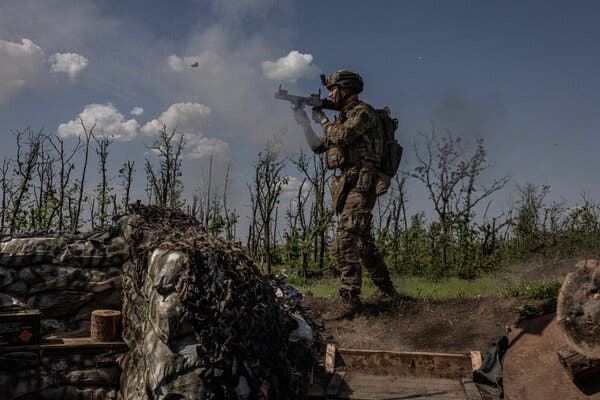Impact of U.S. Halting Weapons Deliveries to Ukraine: A Deep Dive into NBC’s Key Findings

The Impact of Halting U.S. Weapons Deliveries to Ukraine: A Closer Look at NBC’s Published List
A recent disclosure has brought significant attention: NBC has published a list detailing American weapons deliveries to Ukraine that have now been put on hold. This development arrives at a moment when the security landscape in Eastern Europe faces acute pressures, and every adjustment in international military support can reverberate across the region. Highlighting precision-guided rockets, anti-tank missiles, advanced air defense munitions, and critical artillery, the report underscores a pivotal pause in material aid. For observers and stakeholders, understanding both the origins and implications of this halt is essential for contextualizing its broader impact.
At the core of the story are several weapons systems integral to Ukraine’s current defense strategy. Among the items reportedly delayed are over 100 Hellfire anti-tank missiles, which have become symbolic of modern anti-armor warfare. These guided munitions, known for their accuracy and lethality against armored vehicles, have been pivotal in multiple conflict zones and are highly prized by military planners. Alongside them, the withholding of more than 250 GMLRS (Guided Multiple Launch Rocket System) precision-guided rockets for HIMARS systems represents a significant limitation for Ukraine’s long-range strike capabilities. HIMARS, with its ability to deliver precision effects at standoff ranges, has shaped battlefield dynamics, providing a critical deterrent against concentrated enemy forces.
Also on the list are surface-to-air missiles for the Patriot air defense system, a platform that has been celebrated for its proven effectiveness against advanced aerial threats. In high-threat environments, Patriot systems play a vital role in protecting both military assets and civilian infrastructure from ballistic missiles and aircraft. The interruption in these deliveries has potential strategic consequences, especially as air superiority and the defense of urban centers remain top priorities for the Ukrainian military.
Dozens of Stinger man-portable air defense systems are similarly affected. These shoulder-fired missiles have a storied history, providing mobile infantry units with the means to challenge low-flying aircraft and helicopters. Their versatility and ease of deployment allow rapid response to fast-changing aerial threats, making each delivery a force multiplier on the ground. The Stinger’s delay thus represents more than a numerical shortfall; it impacts battlefield flexibility and the ability to counter sudden escalations.
Air-to-air AIM missiles, destined for both F-16 fighter jets and the NASAMS air defense network, are also among those held back. These advanced munitions enhance the reach and lethality of both manned and ground-launched platforms, offering interoperability across allied systems and reinforcing layered defense strategies. The absence of such missiles can influence aerial engagement options, diminishing both deterrence and defensive postures.
Lastly, the delay in thousands of 155mm high-explosive artillery shells halts a key facet of Ukraine’s overall firepower. Artillery has long been regarded as the “King of Battle,” shaping lines of engagement and providing essential support for maneuver forces. In the ongoing conflict, 155mm howitzers and their shells have seen extensive use in both offensive and defensive roles, often dictating the tempo of operations.
Understanding the reasons behind this halt is crucial. Official statements have cited a reassessment of U.S. defense needs and ongoing reviews of military assistance priorities. Reports indicate that concerns about U.S. stockpile levels and the sustainability of continued support have played a significant role in the decision-making process. This review period, while described as situation-specific rather than a permanent cessation, signals a recalibration of supply chains and international commitments.
Contextualizing these developments, it is important to note that the delivery mechanisms for these systems have followed distinct pathways. Some weapons come from active U.S. stockpiles under drawdown authorities, allowing rapid transfer to foreign partners and enabling quick replenishment through dedicated funding. Others are contracted through procurement initiatives, often resulting in a lag between obligation of funds and actual delivery. As noted, both streams have been utilized extensively in support of Ukraine, reflecting a dual-track approach that balances immediate needs with long-term procurement strategies.
Each of the affected categories of military hardware carries unique significance for ongoing operations in Ukraine. The cumulative impact of pausing anti-tank missiles, advanced rockets, air defense interceptors, and artillery munitions is not merely additive but synergistic — influencing both tactical options and strategic calculations. For military planners, these systems are often paired or sequenced to create layered defenses, amplify effects, or sustain operational momentum. Any disruption in this comprehensive supply web has the potential to shift the balance of capabilities on the ground.
In summary, the publication of the list of halted weapon deliveries—spanning Hellfire missiles, GMLRS rockets, Patriot and Stinger missiles, AIM air-to-air munitions, and 155mm artillery shells—marks a significant inflection point in the evolving relationship between the United States and Ukraine in terms of defense support. This development, as reported by NBC, not only underscores the complexity of international military assistance but also highlights the far-reaching consequences of adjusting such commitments at a time of heightened tension. As circumstances continue to evolve, monitoring these dynamics remains critical for comprehending both the immediate and long-term outlook for regional stability and collective security.
